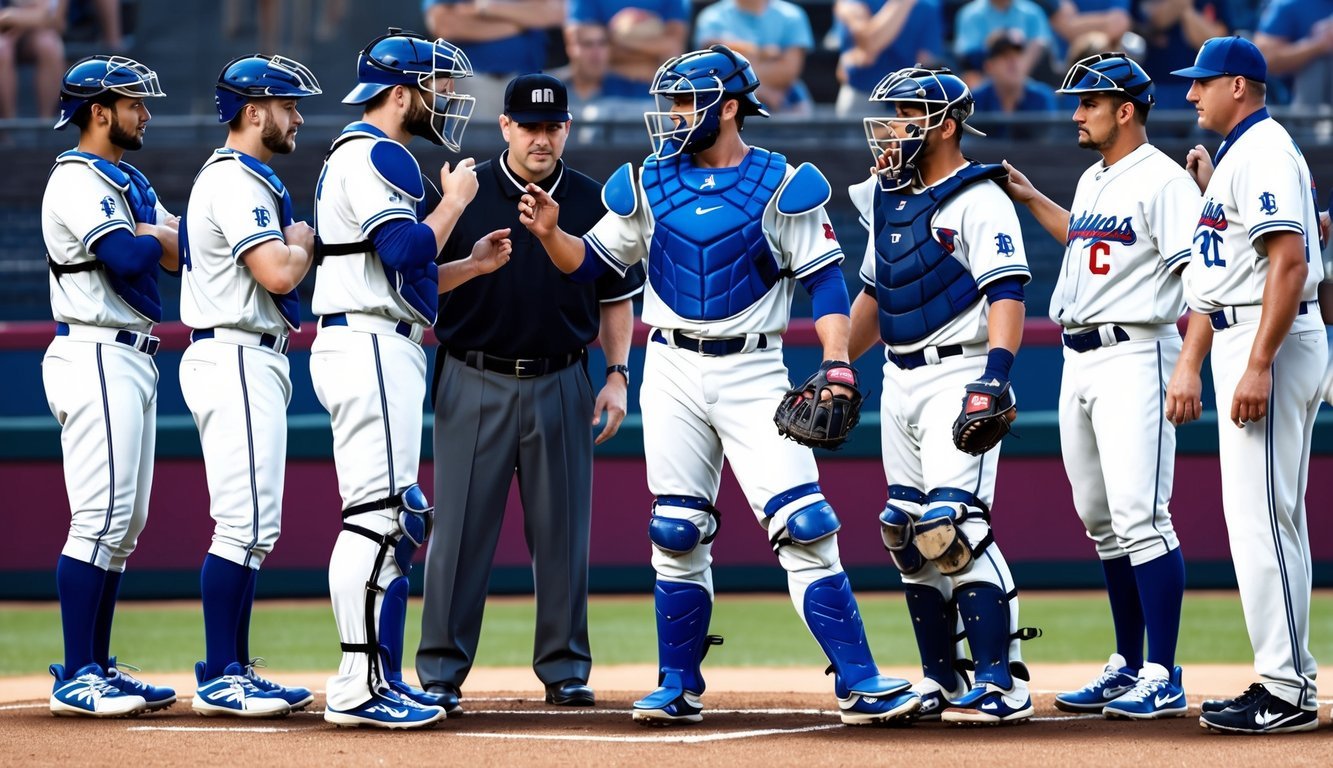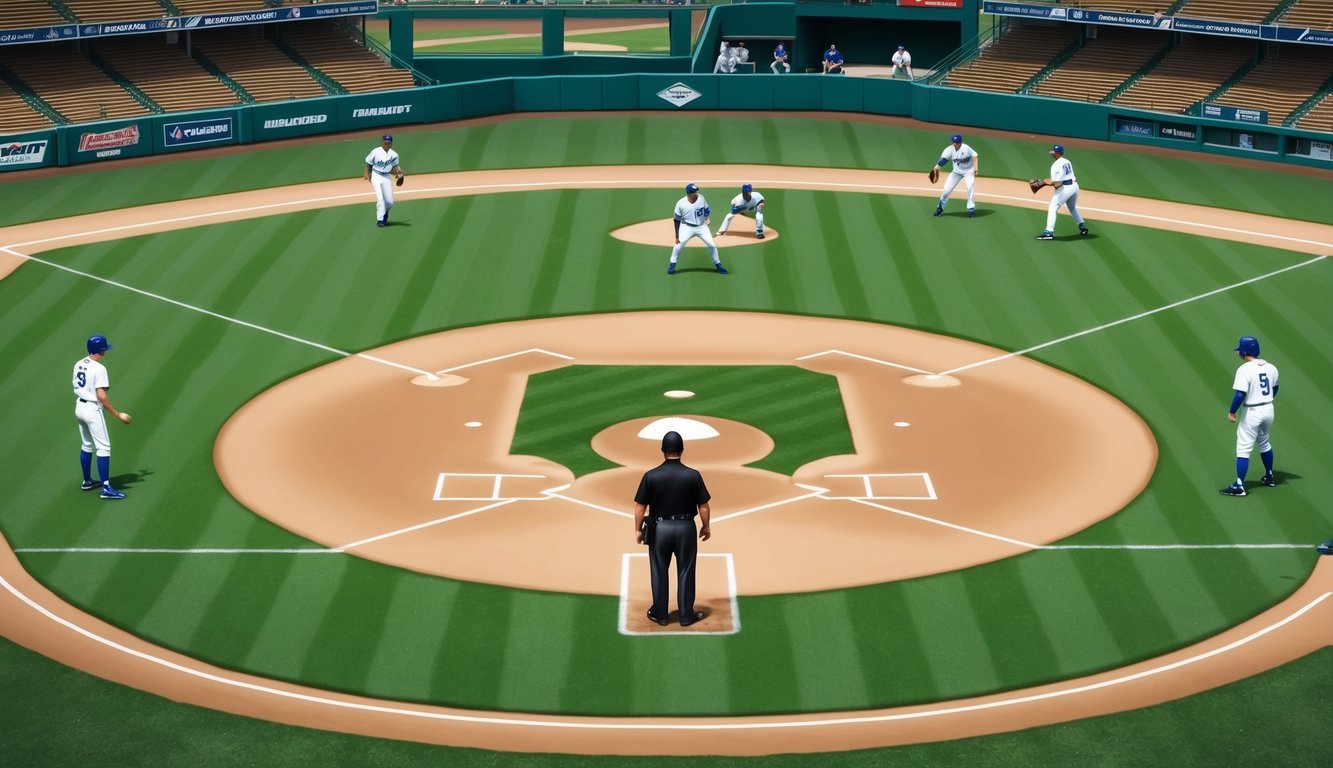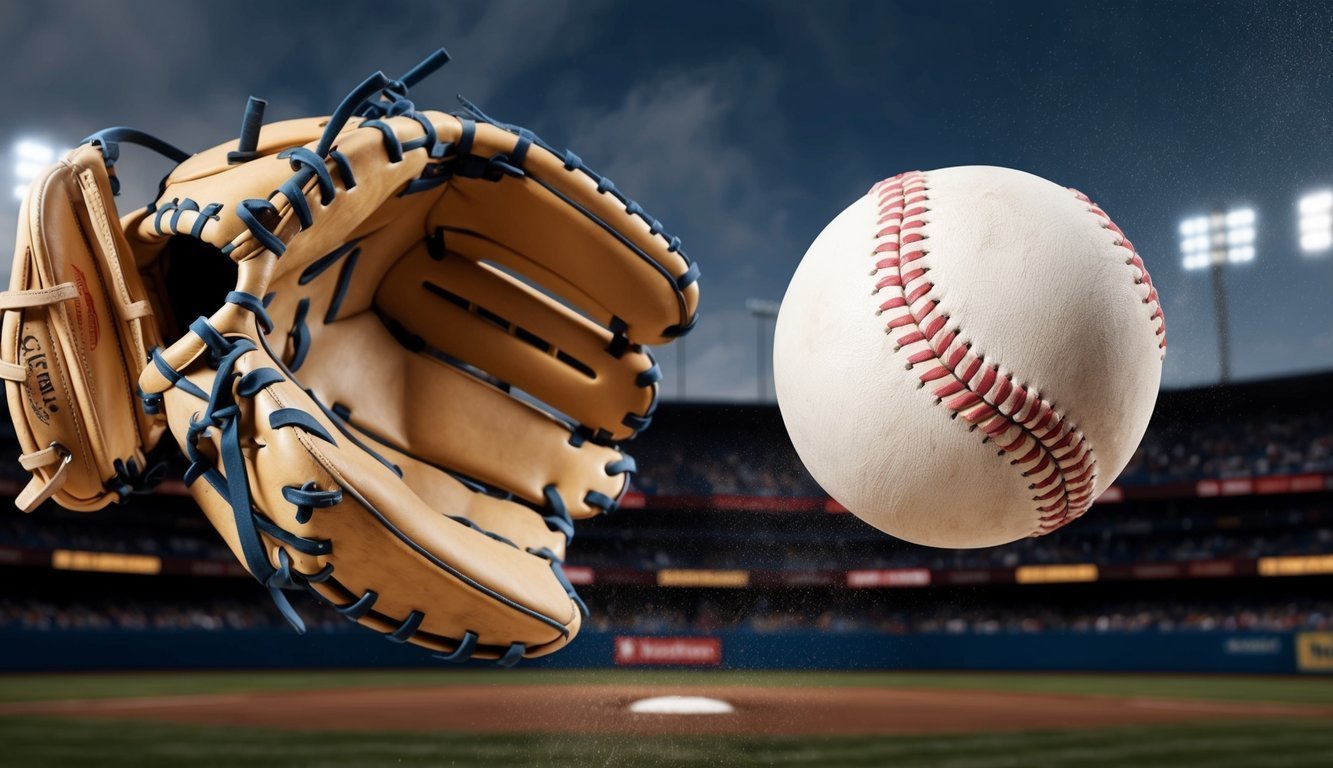Baseball fans always want to understand the intricacies of the game.
One term that often pops up during broadcasts is MVR.
MVR stands for Mound Visits Remaining, a rule that Major League Baseball implemented.
This rule limits the number of times coaches and players can visit the pitcher’s mound during a game.
The MVR rule adds an interesting strategic element to baseball.
Teams must carefully consider when to use their mound visits, as they only get a limited number per game.
This can create tension in crucial moments, especially when pitchers are struggling or facing tough batters.
Understanding MVR is essential for both players and spectators.
It impacts game flow, pitching strategies, and even how teams communicate on the field.
As baseball continues to evolve, rules like MVR play a significant role in shaping the modern game.
The Basics of Mound Visits

Mound visits are a crucial part of baseball strategy, allowing teams to communicate with pitchers during critical moments.
These brief pauses in play serve multiple purposes and are subject to specific rules.
Understanding Mound Visits
A mound visit occurs when a coach, manager, or player approaches the pitcher’s mound to discuss strategy or offer advice.
These conversations typically last no more than 30 seconds.
Mound visits can be used to:
- Calm a nervous pitcher
- Discuss pitch selection
- Plan how to approach a specific batter
- Give the bullpen more time to warm up
The Role of the Coach and Catcher
Coaches and catchers play key roles in mound visits.
A coach may visit to provide strategic guidance or make a pitching change.
Meanwhile, catchers often initiate visits to discuss signs or adjust the game plan.
Catchers have a unique advantage, as their visits are typically quicker and can occur more frequently without counting against the team’s visit limit.
Mound Visit Limitations
MLB implemented stricter mound visit rules in 2018 to improve game pace.
Teams are now limited to five mound visits per nine-inning game.
Each extra inning allows one additional visit.
Visits for injuries, equipment issues, or other emergencies don’t count toward the limit.
The scoreboard displays “MVR” (Mound Visits Remaining) to help fans and teams track usage.
Exceeding the limit results in the mandatory removal of the pitcher.
These limitations have led to more strategic use of mound visits, adding an extra layer of complexity to in-game decision-making.
Strategic Aspects of Mound Visits
Mound visits play a crucial role in baseball strategy, allowing teams to make key decisions and adjustments during the game.
These brief meetings can significantly impact a pitcher’s performance and the overall outcome of an inning or entire game.
Pitching Changes and Strategy
Coaches use mound visits to assess a pitcher’s condition and make strategic decisions.
They may choose to keep the current pitcher in or make a substitution based on factors like pitch count, fatigue, and matchups against upcoming batters.
A visit can provide a much-needed break for a struggling pitcher, allowing them to refocus and regain composure.
It’s also an opportunity to discuss how to approach specific batters or adjust pitching strategy.
Teams must be judicious with their visits, as they have a limited number per game.
Using them wisely can help manage a pitcher’s ERA and prevent runs from scoring.
Signs and Communication
Mound visits are essential for ensuring clear communication between the pitcher and catcher.
They may discuss sign sequences to prevent opponents from stealing signs or decoding their strategy.
During these meetings, coaches and players can:
- Review the game situation
- Clarify pitch selection
- Discuss defensive positioning
- Address any miscommunications
Effective communication during mound visits can lead to better pitch execution and improved defensive plays.
It’s a critical tool for maintaining team cohesion and strategy throughout the game.
Exceptions to the Mound Visit Rules
While MLB limits mound visits, there are some exceptions to the rules.
These allow for necessary interactions without counting against a team’s visit total.
Some exceptions include:
- Visits due to potential injuries
- Cleaning of home plate
- Conferences after offensive substitutions
Pitchers can also request a new ball or ask for clarification on signs without it counting as a mound visit.
These exceptions ensure that essential game functions can continue smoothly while still maintaining the pace of play.
Impact on the Game

MVR has significantly altered baseball dynamics since its introduction.
The rule has influenced game pace, strategy, and player performance in various ways.
Pace of Play and Time Limit
The MVR rule aimed to speed up baseball games by limiting mound visits.
Teams now have 5 visits per 9-inning game, with an extra visit for each additional inning.
This restriction has forced managers and players to be more strategic about when to use their visits.
Pitchers and catchers have adapted by developing more complex sign systems to communicate without meeting at the mound.
The reduced interruptions have led to a smoother flow of play, potentially making games more engaging for fans.
Despite these changes, the impact on overall game duration has been mixed.
While there was an initial decrease in average game time, recent seasons have seen times creep back up to pre-MVR levels.
Effect on Statistics and Player Performance
MVR has influenced player strategies and performance metrics.
Pitchers now face increased pressure to maintain composure and solve problems independently on the mound.
This has led to changes in pitching approaches and potentially affected statistics like ERA.
Catchers have taken on a more crucial role in game management, often making quick decisions without the benefit of frequent mound visits.
Their game-calling skills have become even more valuable.
The rule has also impacted batting strategies.
Hitters may have less time to adjust between at-bats as pitcher-catcher conferences are limited.
This could influence batting averages and other offensive stats.
While it’s challenging to isolate MVR’s direct effect on player statistics, the rule has undoubtedly shaped how the game is played and managed at the highest level.
Regulations and Enforcement

The MLB has established clear guidelines for mound visits and their enforcement.
These rules aim to maintain the pace of play and ensure fair competition.
By limiting the number of mound visits a team can make during a game, the MLB seeks to prevent unnecessary delays and keep the action flowing for fans.
This approach not only impacts games in Major League Baseball but also serves as a model for international baseball events around the world, promoting a more exciting atmosphere.
As more leagues adopt similar regulations, the global baseball community can benefit from enhanced gameplay and viewer engagement.
Role of the Umpire
Umpires play a crucial role in monitoring and enforcing mound visit regulations.
The home plate umpire keeps track of each team’s MVR count throughout the game.
They signal to the official scorer when a mound visit occurs, ensuring accurate record-keeping.
Umpires also have the authority to deny mound visits if a team has exhausted their allotted number.
In cases where a player or coach attempts an unauthorized visit, the umpire will intervene and direct them back to their position or the dugout.
Penalties for Exceeding Visits
Violating the mound visit limit can result in serious consequences.
If a team attempts a visit after using all their allowed trips, the umpire will issue a warning.
Continued disregard for the rule may lead to ejection of the offending manager, coach, or player.
In some cases, an unauthorized mound visit might force a pitching change.
This can significantly impact a team’s strategy, especially in crucial game situations.
Mound Visits in Special Contexts

Baseball’s mound visit rules have some interesting nuances when it comes to extra innings and injury situations.
Let’s take a closer look at how these special contexts impact the five mound visits policy.
Extra Innings and the Mound Visit
When a game goes into extra innings, teams get a little bonus for their mound visit count.
Each team receives one additional mound visit for every extra inning played.
This rule helps managers and coaches strategize during those nail-biting extra frames.
For example, if a team used all five of their mound visits during the first nine innings, they’d get a fresh visit to use in the 10th inning.
If the game continues to the 11th, they’d get another visit, and so on.
This extra visit can be crucial for discussing tactics or checking on a pitcher’s stamina during those high-pressure moments.
Injury and Trainer Visits
When it comes to injuries, baseball takes a compassionate approach.
A trainer can visit the mound to check on a potentially injured pitcher.
The best part is that these visits don’t count against a team’s mound visit total.
This rule ensures that player safety isn’t compromised by strategic considerations.
If a pitcher shows signs of discomfort or potential injury, the medical staff can freely assess the situation without burning a valuable mound visit.
If a pitcher is removed due to injury, the new pitcher gets as much time as needed to warm up.
This isn’t counted as a mound visit either.
These injury-related exceptions help maintain the balance between game strategy and player well-being.
